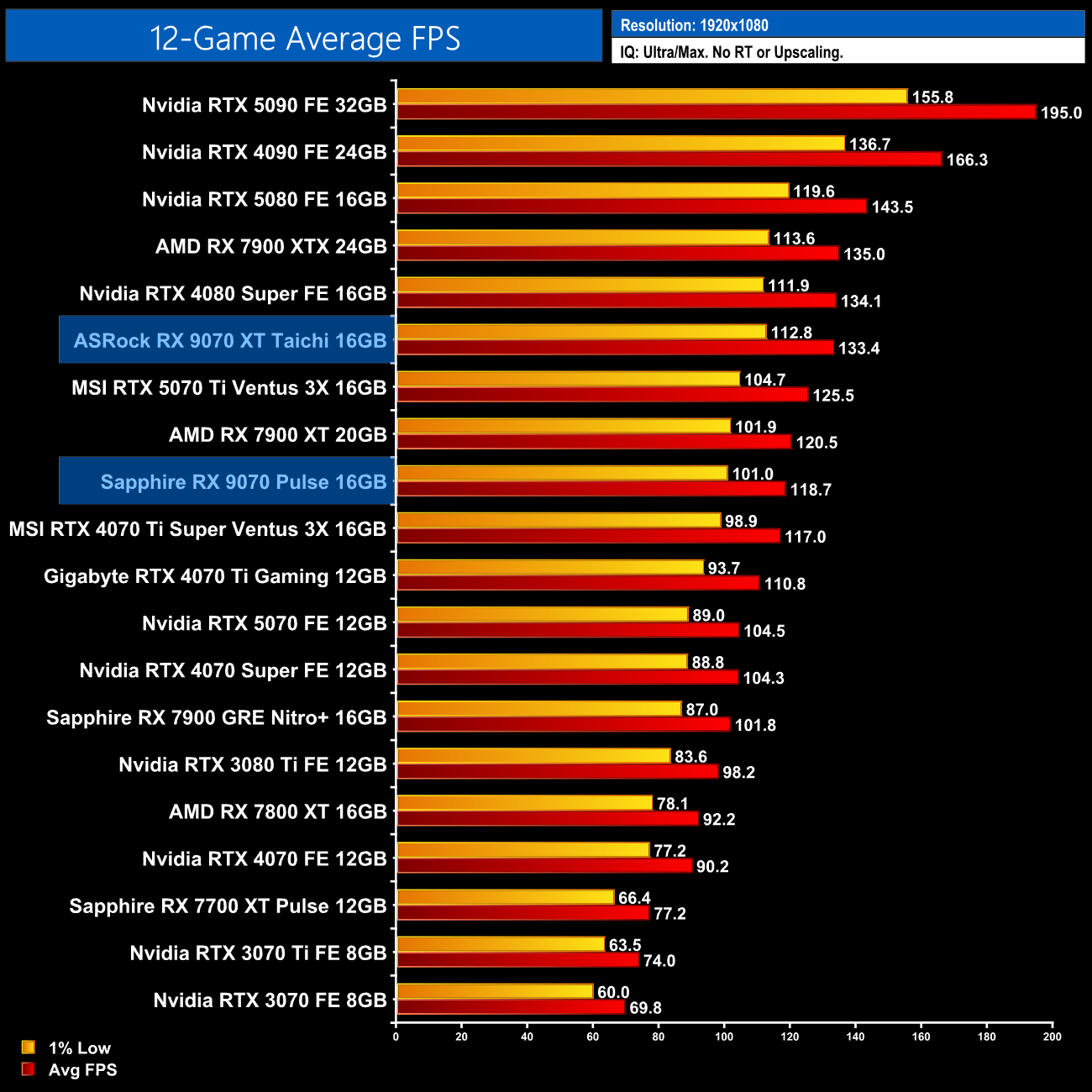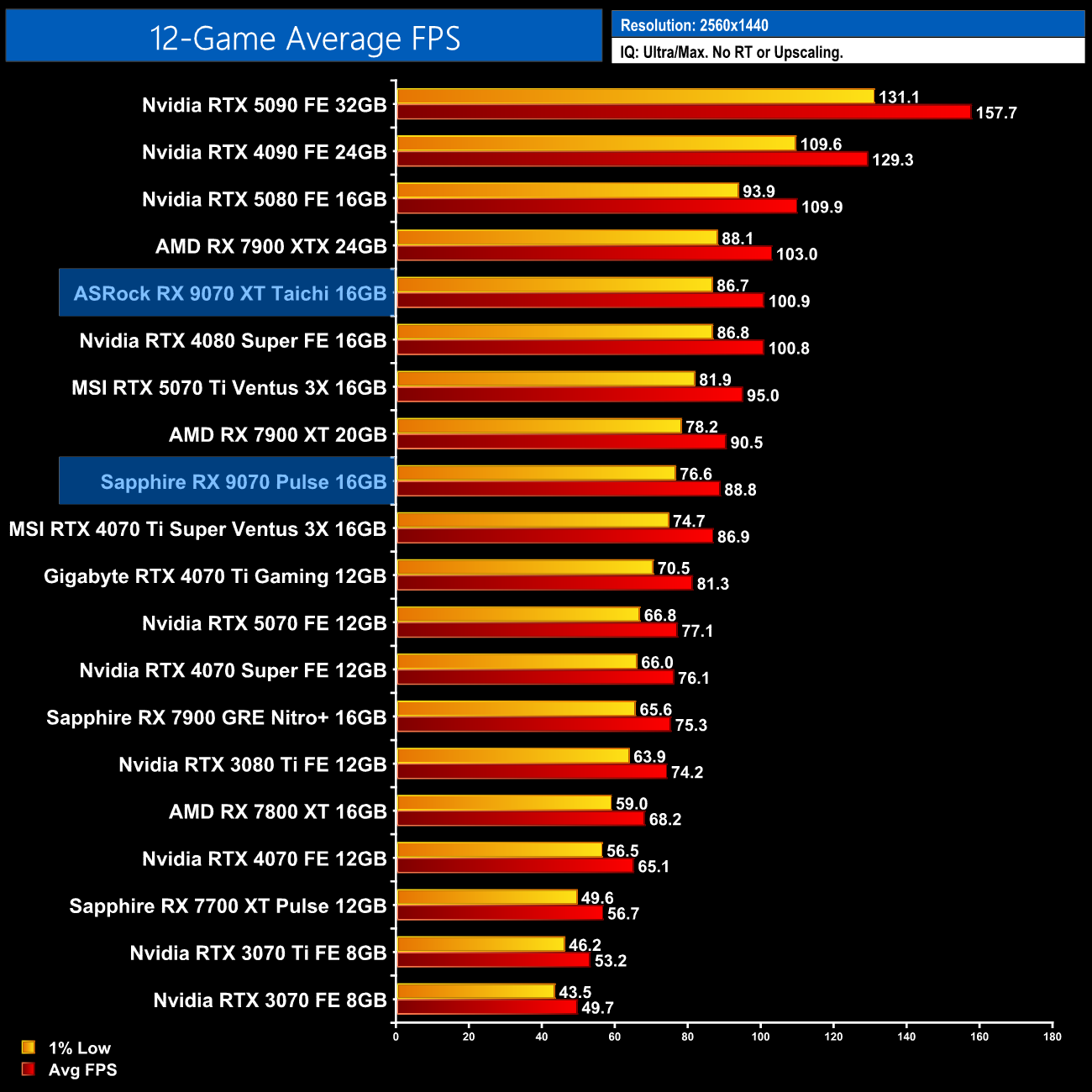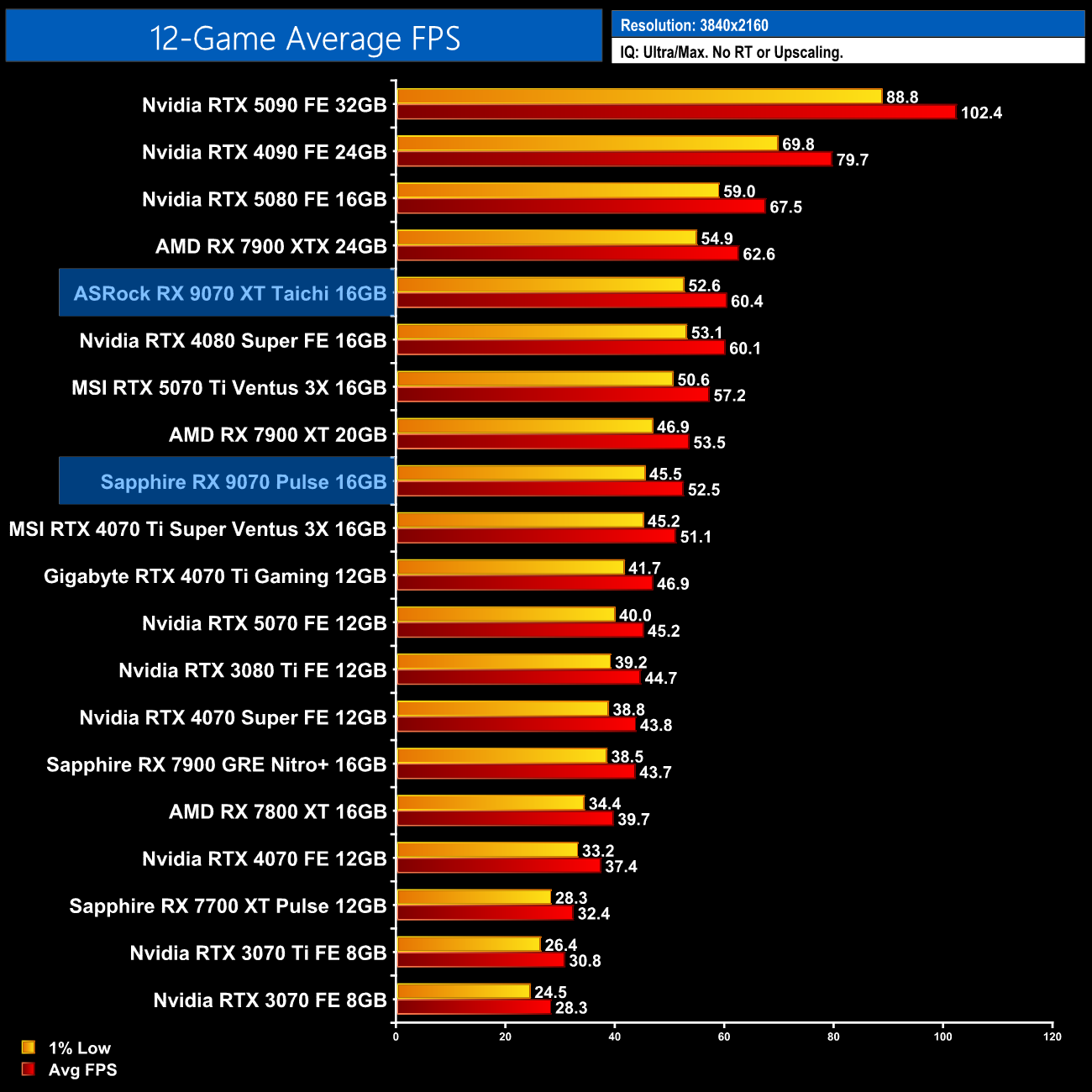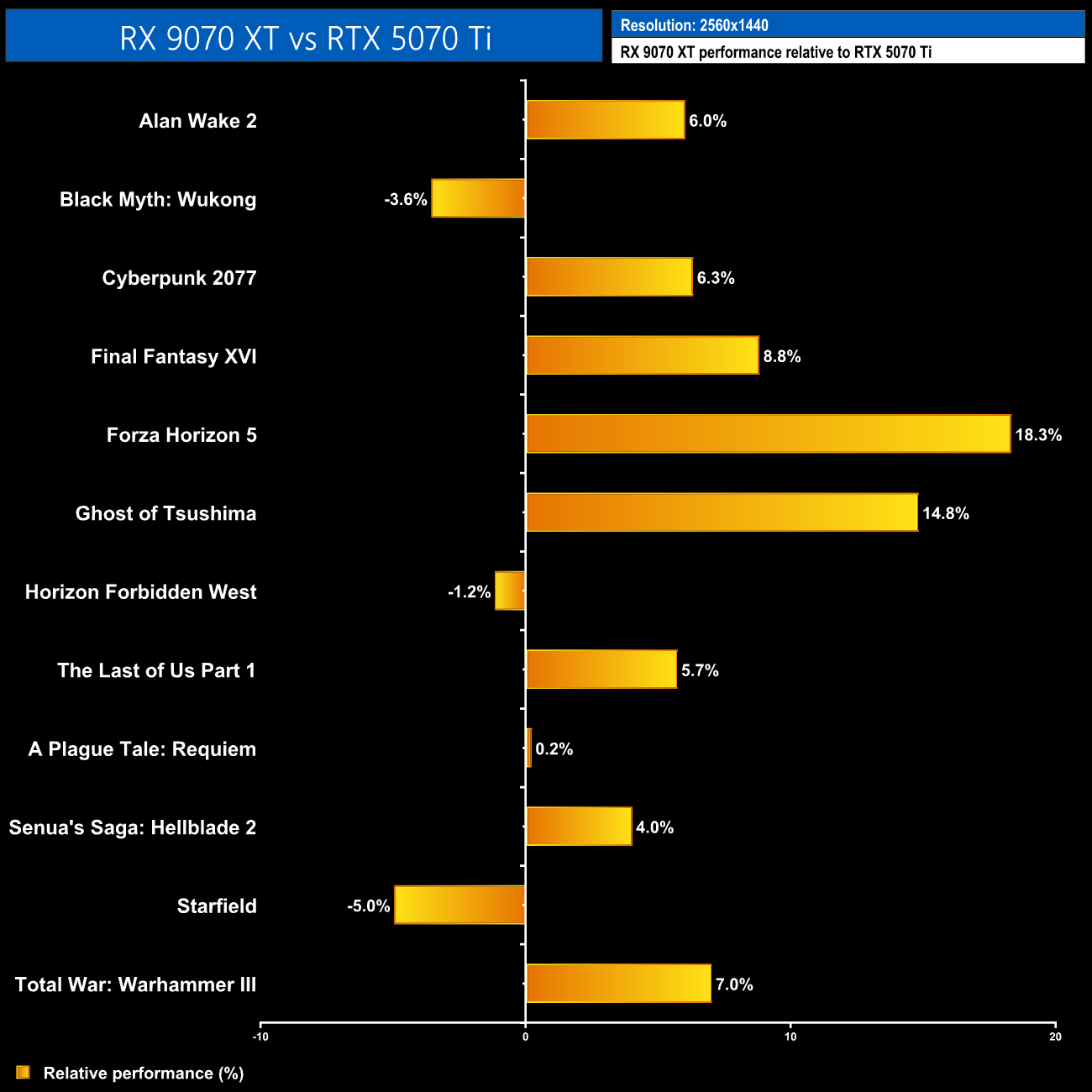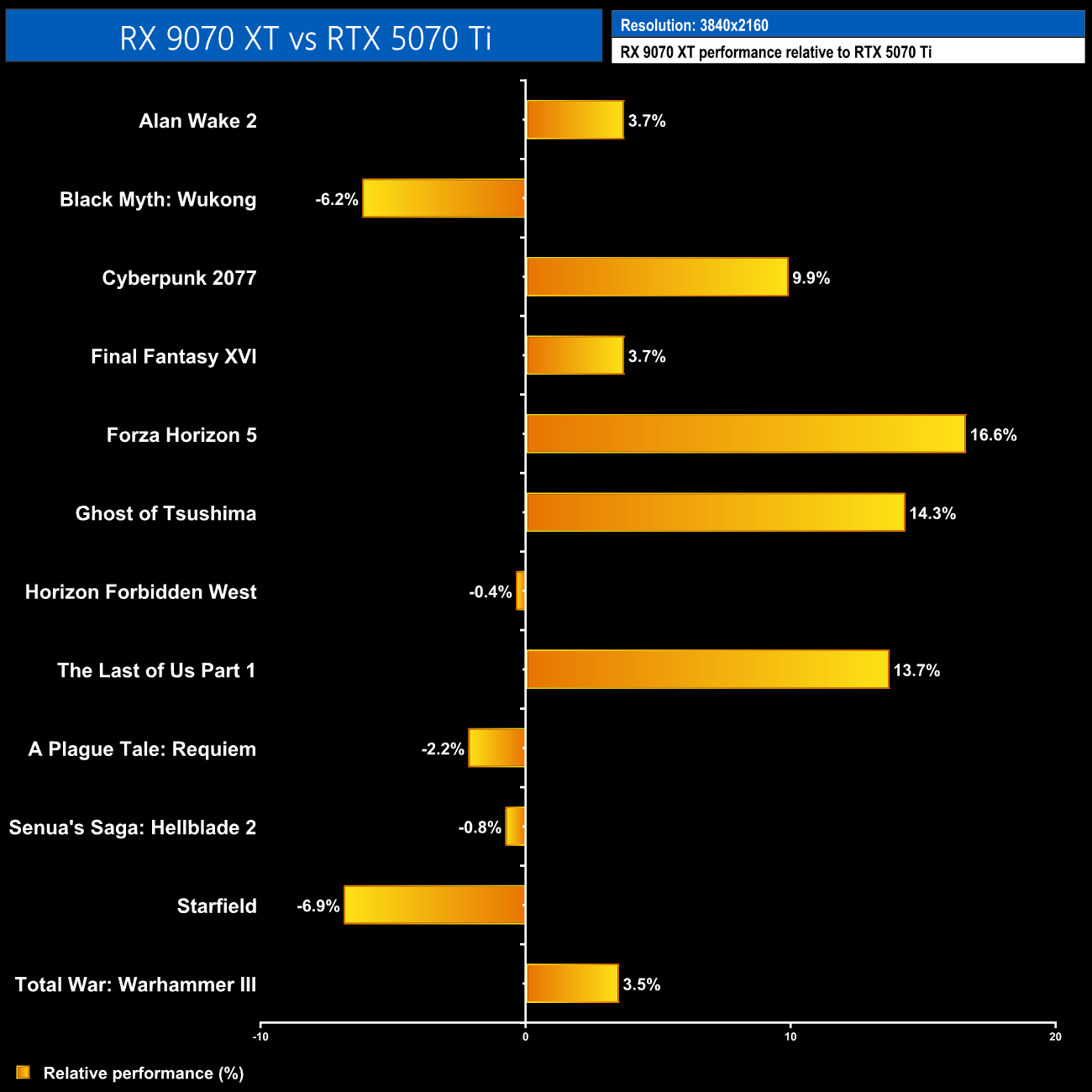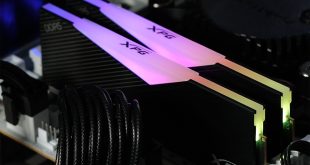Here we present frame rate figures for each graphics card, averaged across all 12 games on test today. These figures can disguise significant variations in performance from game to game, but provide a useful overview of the sort of performance you can expect at each resolution tested.
Overall then, there's no doubt the RX 9070 XT delivers impressive rasterisation performance. At 1440p it averages 101fps, putting it bang in line with the 4080 Super, while also making it 6% faster than the RTX 5070 Ti. I do want to stress at this point that we highly recommend reading/watching other reviews where possible – some of the performance swings versus Nvidia are quite pronounced, so there will be varying results depending on what games are tested. Even compared against prior RNDA 3 GPUs, though, the 9070 XT is delivering pretty much 7900 XTX performance, while it's 12% faster than the 7900 XT.
Up at 4K, we're still looking at a 6% gain over the RTX 5070 Ti on average, while performance is dead level with the 4080 Super. Compared to the 7900 GRE, we saw a 38% uplift – not quite the 42% as promised by AMD, but it's pretty darn close so far we're only talking about rasterisation. It's also just 4% slower than the 7900 XTX.
Just to take a closer look at performance versus the 5070 Ti, here we can see the 9070 XT's relative performance compared to its GeForce competitor. We only saw the RDNA 4 GPU come in slower in three titles at 1440p, and never by more than 5%. Six of the twelve games tested show single-digit gains for the 9070 XT, while Forza Horizon 5 and Ghost of Tsushima are clear outliers. However, if we remove them from the average, the 9070 XT only goes from being 6% faster to being 3% faster, so it doesn't really affect the outcome in any meaningful way.
At 4K, the 5070 Ti does come on stronger in some games, although others – such as Cyberpunk and TLOUP1 saw increased margins for the 9070 XT.
 KitGuru KitGuru.net – Tech News | Hardware News | Hardware Reviews | IOS | Mobile | Gaming | Graphics Cards
KitGuru KitGuru.net – Tech News | Hardware News | Hardware Reviews | IOS | Mobile | Gaming | Graphics Cards


